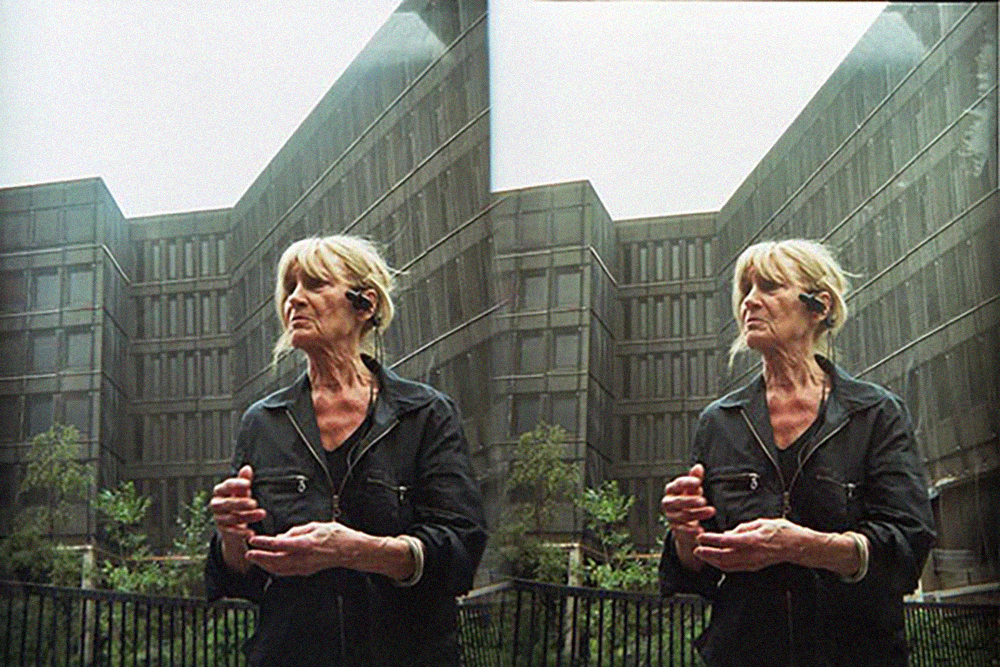How Steveni went about relocating the artist from the seclusion of the gallery into the social world
At first glance, the life and career of Barbara Steveni, who died in 2020, fits well within the artworld’s current attention to overlooked-in-their-lifetimes women artists. Born in Persia (now Iran) in 1928, Steveni had, by the 1950s, gone to art school, married the eccentric proto-conceptualist artist John Latham and was turning in the circles of London’s radical art scene. In 1965 Steveni had the idea for what would become the Artist Placement Group (APG), an organisation with the goal of relocating the artist from the seclusion of the gallery into the social world, bringing the artist’s particular insights into the workings of big corporations, national industries and government departments. It became a model, in concept and method, for a form of practice that now seems unremarkable: the artist’s residency within nonart host venues or organisations. But Steveni, charismatic and articulate, while fronting the group as its spokeswoman (Latham was a cofounder and closely involved), communicating its vision and negotiating the placement agreements, ended up being seen as the ‘secretary’ or ‘administrator’, partly because of the sexism of the time, and partly, perhaps, because in staging the idea of the special identity of artists who took on the placements, Steveni ended up appearing as facilitator rather than initiator.
I Find Myself, then, retrieves Steveni’s career from the shadow of APG; its activities are confined to Modern Art Oxford’s smaller middle spaces, squeezed between the larger galleries, where Steveni’s earlier and later work is the focus. This is a complicated goal, since I Find Myself is partly an act of reconstitution of a life’s activity that did not always leave behind ‘finished works’, or even works of ‘art’, given Steveni’s ambiguous attitude to her own role as an individual artist. In the last gallery one finds recognisable ‘artworks’ made at art school – an untitled painting conjuring a vaguely female figure composed of wonky colourful geometrics (untitled, c. 1949–52), and a deft charcoal drawing of a London public garden (Cheyne Walk, c. 1940s–50s). But it’s the group of object-tableaux from the late 1950s that open the show which indicate Steveni’s turn to an interest in a more expansive, unmediated connection to reality. The Untitled Assemblage works (all c. 1958–62) are found objects painted and glued onto baseboards that are hung like paintings: a roll of firehose unfurling across a bright yellow rectangle; scissors nestling inside moccasin slippers, the whole fixed onto a field of brown linen. Postwar and post-Duchamp, artists were turning objects back into art – Latham was affixing cut and burnt books to canvases, and according to one of the catalogue texts, the couple were hosting the Swiss ‘new realist’ sculptor Daniel Spoerri. These few works are bolstered by vitrines presenting found-object works that Steveni assembled later, testament to a habit of collecting and hoarding objects while deferring what should be done with them. The centrepiece of the first section, Laure Prouvost’s installation Dancing thought leftovers with Barbara (2025), is itself a sort of portrait of Steveni: Prouvost, who worked as Latham’s assistant and was close to Steveni, has hung a host of worn and disintegrated objects accumulated by Steveni, over which plays a floor-to-ceiling multichannel video projection of Prouvost’s camera exploring these objects in huge closeup shots. If there’s any connection between this section and what would drive Steveni’s later work, it might be to do with the intimation that society itself, rather than discrete matter, could be a material to be shaped by an artist.

The highlighting of what an artist didn’t quite make, or returned to make later, full of deferment and putting off, nevertheless sets up a more complicated story than that of the female artist diverted from realising her individual ambitions by everyday sexism, the responsibilities of having children and raising a family. Certainly Steveni was profoundly aware of these obstacles, but once the show moves to the more familiar activities of the APG during the 1970s – stuttering, faded monochrome videos of Steveni handling press conferences or negotiating a placement with an executive from a British electronics company; letters and correspondence between APG and the Arts Council, in which its director of art sourly justifies cutting its funding because ‘APG is more concerned with social engineering than straight art’ – it becomes clearer that what is at stake is the perhaps unresolvable tension between the identity of the ‘straight artist’ and that of the ‘straight’ organiser. Steveni would continue the principles of APG with her later organisation O+I, represented here by video and photographic documents of a long-running project in schools in London’s Southwark borough during the 1990s. By the final gallery, the focus shifts to Steveni’s later ongoing project I AM AN ARCHIVE (2002–15), where, through video interviews with collaborators, walking video conversations with friends while visiting sites in London and elsewhere, and conferences, Steveni sought to retell her own history as the history of the ideas and projects she was instrumental in making happen.
What I Find Myself subtly traces is how Steveni battled with the entrenched cultural status of ‘the artist’ – individual, specially talented, too often male – while attempting to retain a more holistic vision of how an artist’s unattached creativity could operate productively within society. It was perhaps always a utopian project, since it required profoundly reconfiguring – or abolishing – the distinction between the artist and forms of organisation that make art happen. And it’s perhaps why Steveni, in the end, could never settle on being an artist, or organiser, or both.
I Find Myself at Modern Art Oxford, through 8 June
From the April 2025 issue of ArtReview – get your copy.
